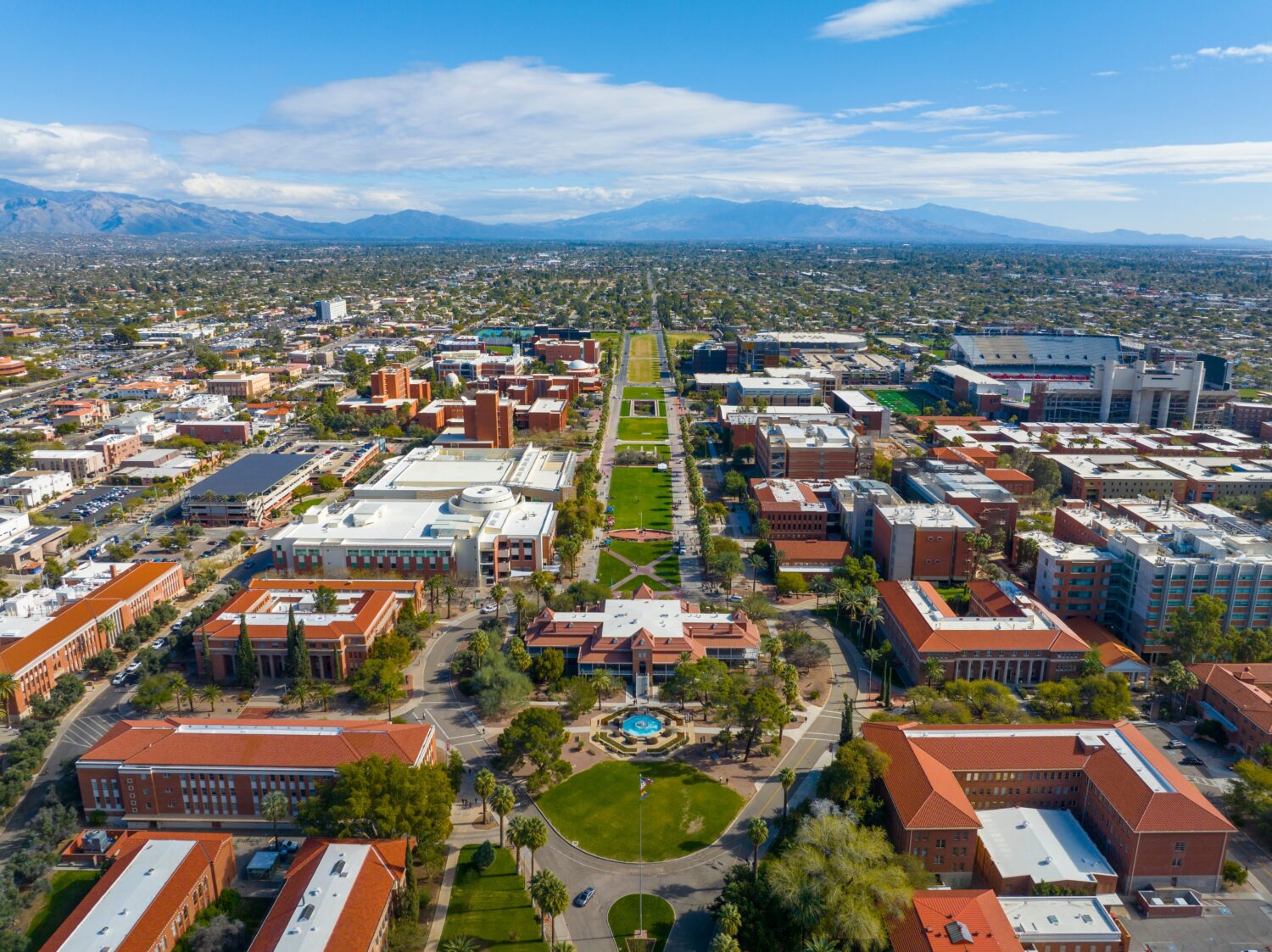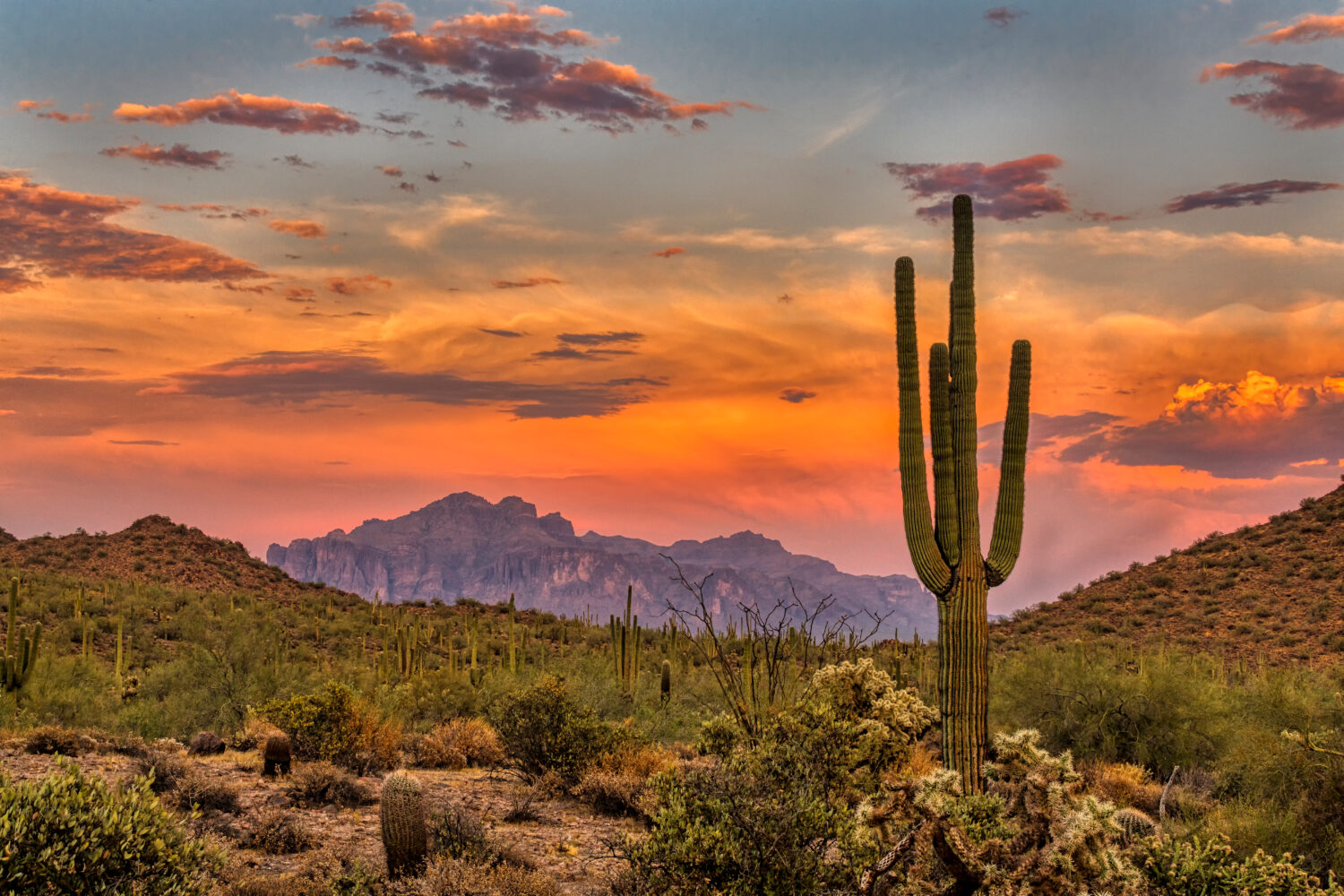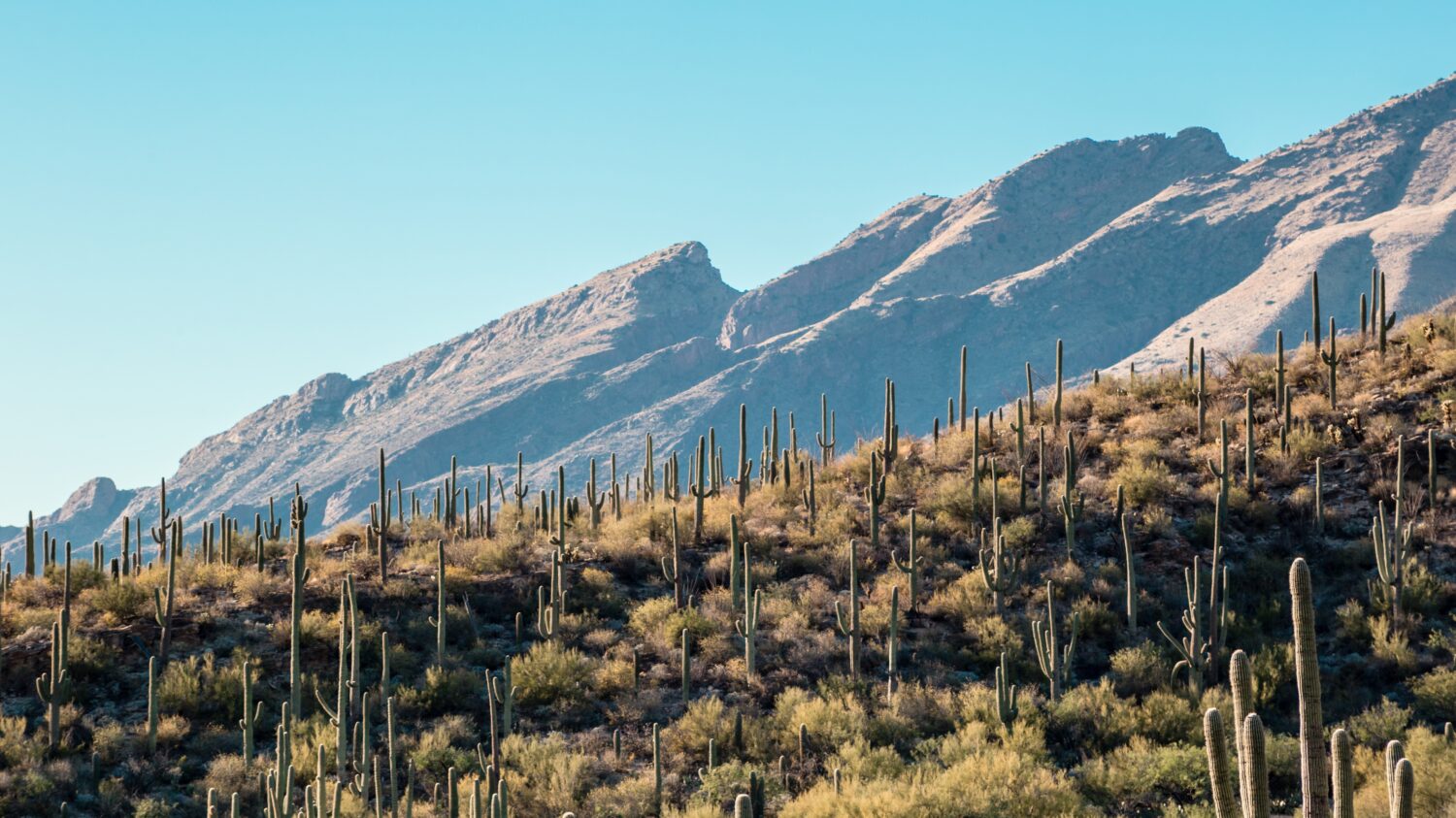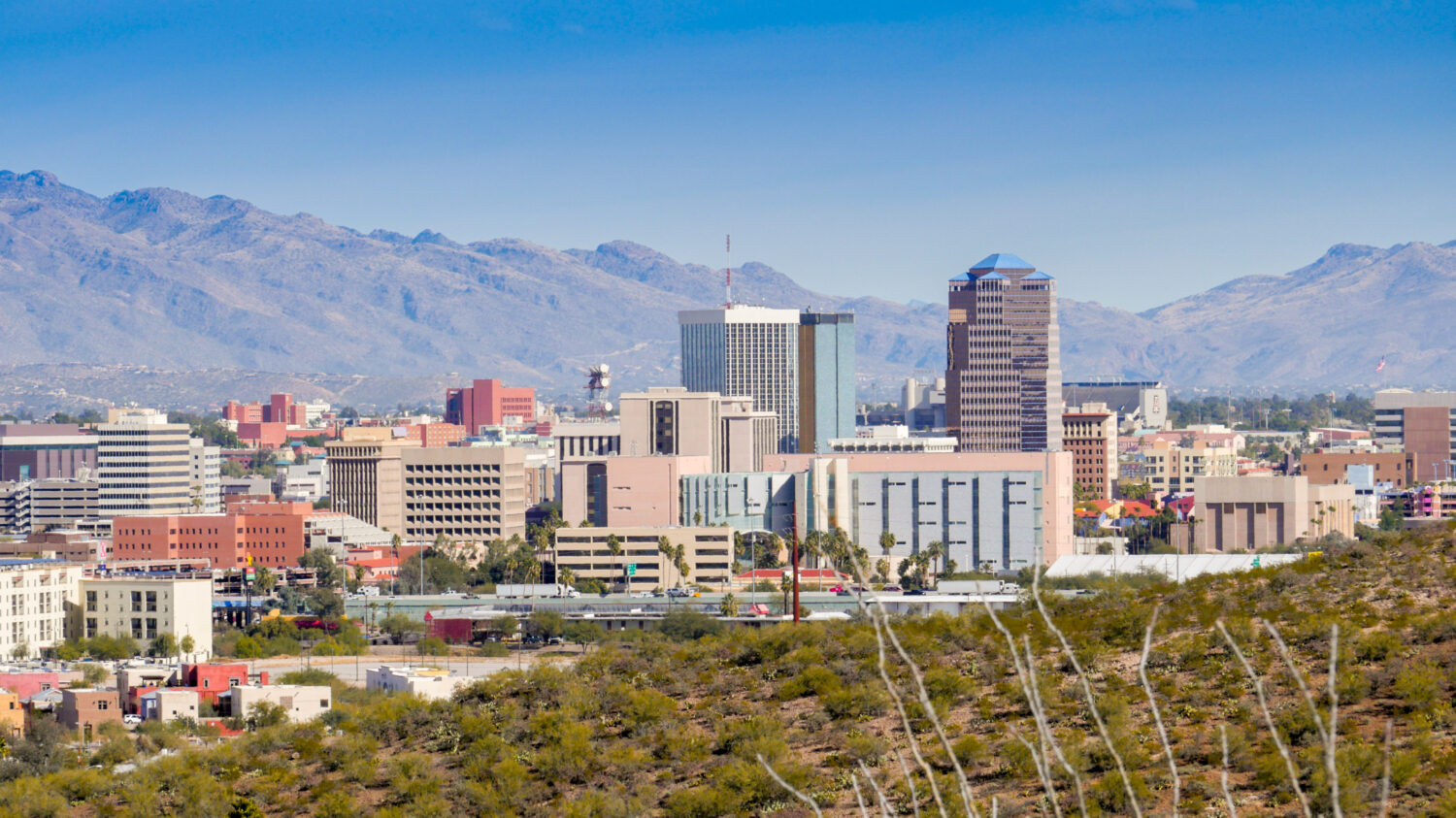Where Is Tucson? Map Location and Proximity to Other Arizona Cities
Nestled in the heart of the Sonoran Desert, Tucson is a captivating destination that offers a unique blend of natural beauty, rich history, and a dynamic urban environment.
With a population of over 500,000 residents, Tucson is the second-largest city by population in Arizona. The city is a thriving center of culture, education, and commerce in the American Southwest. This city is renowned for its stunning desert landscapes and iconic saguaro cacti.
Let’s delve into the various aspects of Tucson’s location.
Where Is Tucson Located on the Map?
Tucson is in the southern part of Arizona, United States. Situated in the Sonoran Desert, it stands as the second-largest city in Arizona, approximately 60 miles (97 kilometers) north of the United States-Mexican border.
How Far Is Tucson from Other Major Cities in Arizona?
Let’s compare the distance between Tucson and other large cities in Arizona.
| City | Distance from Tucson (Approximately) |
|---|---|
| Phoenix | 112 miles (180 kilometers) |
| Prescott | 211 miles (340 kilometers) |
| Sedona | 227 miles (365 kilometers) |
| Yuma | 236 miles (380 kilometers) |
| Flagstaff | 255 miles (410 kilometers) |
Is Tucson a Good Place to Live?

©Wangkun Jia/Shutterstock.com
With stunning natural beauty and a lot of opportunities for outdoor opportunities, Tucson offers a lot of perks to its inhabitants. However, because of its location in the Sonoran Desert, its extreme climate does not fit everyone.
Tucson boasts, on average, 286 days of sunshine annually. However, the desert climate also means extremely hot summers, with temperatures often exceeding 100°F (37°C). Some inhabitants find the hot temperatures too hot to handle, while others appreciate and enjoy the lack of harsh winters. Due to its desert location, Tucson faces a lot of challenges regarding water scarcity and occasional air quality.
Due to its location in the southern part of Arizona, Tucson boasts its stunning landscapes and extensive options for outdoor recreational opportunities. Close to the city, residents and visitors can explore the Saguaro National Park, home to the iconic saguaro cactus. The park is dedicated to the preservation of these magnificent plants.
Outdoor enthusiasts can enjoy dozens of hiking trails and try mountain biking. In the summer, outdoor activities are limited due to the extreme weather. Additionally, Tucson offers a great food scene, museums, and galleries to try and visit.
Plus, it is one of the most affordable cities to live in Arizona! The cost of living is slightly below the U.S. national average. However, the housing prices are, on average, 16% less than in Phoenix and 24% less than in Scottsdale. It is essential for new residents to do some research to pick the proper neighborhoods.
What Is Tucson Famous For?

©Brent Coulter/Shutterstock.com
Its stunning landscapes make Tucson a favorite and popular destination. Tucson is perfect for those who enjoy visiting desert landscapes, specifically in the Sonoran Desert and Saguaro National Park. In addition, Tucson’s surrounding areas offer rugged mountain ranges like the Santa Catalina Mountains and various rock formations.
Plus, the region is home to the saguaro cactus. With its tall, branching arms, this cactus is an iconic symbol of the American Southwest and is abundant in the Tucson area. These majestic cacti can live for centuries.
With some of the best skies for stargazing, Tucson is an incredible place for astronomical enthusiasts. The city is home to the University of Arizona, which houses the Steward Observatory. The city’s high altitude and clear skies make Tucson an ideal location for astronomical research. It is also a hub for the study of space sciences. Near Tucson are institutions like the Planetary Science Institute and the Kitt Peak National Observatory.
The University of Arizona, located in Tucson, is a large institution specifically known for its astronomy and planetary science departments, as well as its contributions to space exploration and technology.
The city has a rich cultural heritage influenced by Native American, Mexican, and Spanish traditions. Yearly, the city is home to the Tucson International Mariachi Conference and the All Souls Procession, a unique celebration of life and death. Additionally, Tuscon has some of the best food in Arizona, thanks to its blend of cultures. The city is famous for its delicious Sonoran hot dogs, food trucks, and a growing farm-to-table movement. In 2015, Tucson was designated as a UNESCO City of Gastronomy, recognizing its rich culinary heritage.
Additionally, the city hosts the Tucson Gem, Mineral & Fossil Showcase, one of the world’s largest gem and mineral shows. Each February, collectors, dealers, and enthusiasts from across the globe converge on Tucson to buy and sell rare and beautiful gemstones, minerals, and fossils.
What Is Tucson’s Geography?

©Katie Dobies/Shutterstock.com
As said previously, Tucson is characterized by its location in the Sonoran Desert in Southern Arizona. Its desertic location influences its climate, terrain, and natural surroundings.
Tucson is nestled within the vast Sonoran Desert, one of North America’s hottest and most arid deserts. The desert is home to the iconic saguaro cacti, which can reach towering heights. The desert environment also features a diverse array of plant and animal species. These are adapted to survive in the extreme heat and limited rainfall.
The city is surrounded by several mountain ranges: the Santa Catalina Mountains to the north, the Tucson Mountains to the west, and the Rincon Mountains to the east. These provide a stunning backdrop to the city of Tucson. They also offer opportunities for outdoor activities such as hiking, rock climbing, and wildlife viewing. The city’s surrounding valley provides fertile land for agriculture and urban expansion, while the surrounding mountains offer protection and scenic beauty.
Due to its desert location, Tucson faces extreme weather challenges and water scarcity. The city relies on various water sources, including the Central Arizona Project (CAP) canal system, groundwater, and reclaimed water, to meet its water needs. Water conservation and management are crucial in Tucson, specifically in the summer.
Despite its harsh desert conditions, Tucson’s geography supports a surprisingly diverse range of plant and animal species. The region is home to various wildlife, including desert tortoises, javelinas, and various bird species. The Saguaro National Park and other protected areas in the vicinity help preserve and protect this biodiversity.
What Is the Climate in Tucson?

©Chris Rubino/Shutterstock.com
The city experiences a desert climate characterized by extremely hot summers and mild winters. Its climate classification is often called a “hot desert” or “arid desert” climate.
Summers in Tucson are extremely hot, with daytime temperatures frequently exceeding 100°F (37°C). These temperatures typically last from May through September, and the city often experiences heat waves. The city boasts an average of 286 days of sunshine, making it one of the sunniest cities in the United States. The arid desert conditions and the city’s high altitude contribute to intense sunlight and high temperatures. Tucson residents and visitors are at an increased risk of exposure to harmful ultraviolet (UV) radiation.
Thanks to its desert climate, Tucson residents do not experience harsh winters. The temperatures stay relatively mild and pleasant from November through February, usually ranging from the mid-60s to low 70s°F (18-24°C). However, the temperatures can be cold at night and drop into the 40s°F (4-9°C). It is rare for Tucson to experience freezing temperatures and snowfall.
Spring and fall, the transitional seasons, are usually pleasant. It is the perfect season to enjoy outdoor activities without suffering from extreme heat. In the spring, residents and visitors can observe the stunning blooming of desert wildflowers.
Additionally, Tucson has a very dry climate, with low humidity levels throughout the year. It experiences minimal rainfall, averaging around 12 inches (30 centimeters) annually. Most rain occurs during the summer, typically from July through September. Short but intense thunderstorms can bring localized heavy rainfall.
During spring and fall, Tucson sometimes experiences windy conditions. On very windy days, it can lead to blowing dust and sand from the desert.









